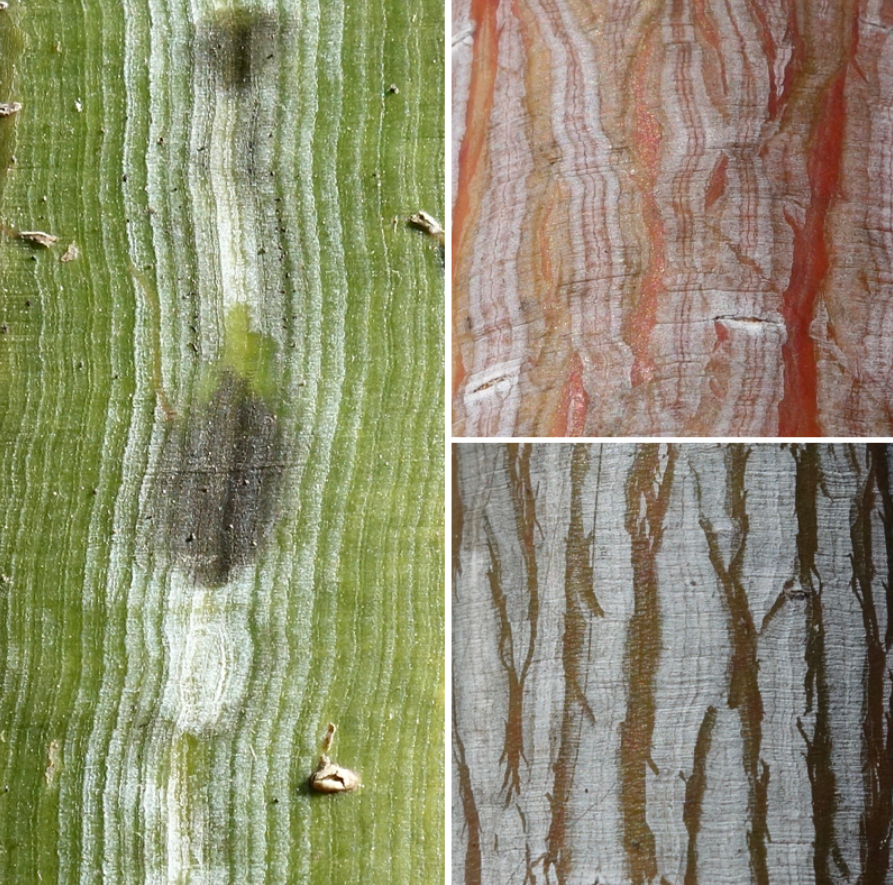Maples, members of the genus Acer, are an amazingly diverse set of species. New Englanders may conjure up visions of sugar maples (Acer saccharum), silver maples (A. saccharinum), red maples (A. rubrum), and box elders (A. negundo). Hopefully, the striped (snakebark) maple (A. pensylvanicum) also comes to mind. This native of the northeastern U.S. is a magnificent tree to enjoy for its bark in the winter: smooth, green, and of course striped! Sadly, there is only one native species of snakebark maple in North America, and none in Europe. The action is all in Asia.
Fortunately, the Arnold Arboretum is home to eleven species of snakebark (this moniker should be obvious to all!) maples and I have made it my business to visit them in the winter for several years running. The subtleties of the colors, ranging from olive green to mint green, pinkish, and orange, with the vertical waxy white striping, are sensational to see—the smoothness of the bark, its coolness to the touch, add to the sensory experience.
It was hard to pick only three pictures for today’s Post, but here we are. On the left is A. davidii (Father David’s maple, 青榨枫; 692-94*A). The magnificent waxy stripes seem to ripple like waves across the bright green photosynthetic bark. Although snakebark maples tend to be on the green side, there are fantastic examples of bark that tend towards orange, as in A. pectinatum (篦齿枫; 463-2010*A; upper right). Finally, our North American disjunct A, pensylvanicum (aka moosewood maple; 563-2008*A; lower right) with a particularly dramatic amount of waxiness, some olive green, and a subtle blush of orange.


